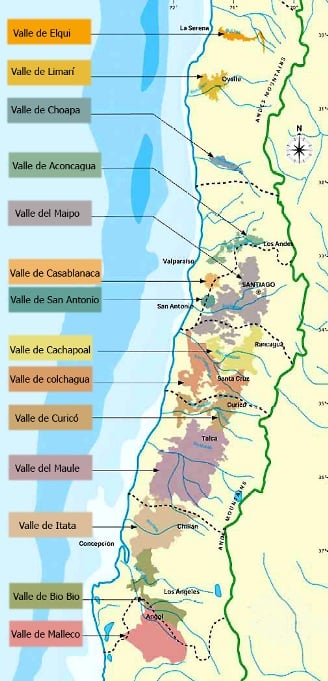Chilean Wine
Chile's wine industry is currently thriving, and it's history of wine production is fascinating. Chile has not one but two claims to fame:
- Unlike every other wine producing country in the 19th century, Chile was spared the wrath of Phylloxera, the wine root loving louse which decimated vineyards the world over.
- It also holds the only honor of rediscovering a grape that had been thought lost. All good wine students know that there are 5 grapes that makeup a Bordeaux blend: Cabernet Sauvignon, Cabernet Franc, Merlot, Petit Verdot and Malbec. But once up on a time in the days prior to Phylloxera, there was a 6th: the charismatic Carmenere. How the hell did that happen?
- Everyone was a Francophile in the 19th century (yes, a gross generalization but bear with me). It was during this period that native French varieties were imported into this Spanish colonized country.
- In the vineyard, Carmenere bears a striking resemblance to Merlot, so much so that the two varieties got mixed up within the same plots. Although Phylloxera wiped out all Carmenere in Europe, it remained incognito in the new world until the 1990s when oenoligists confirmed it's identity.
Today it is known for rocking it's own version of almost every major variety, from silky elegant Pinot Noirs to earthy Cabernet Sauvignons to sassy Sauvignon Blancs to rich, ripe, pure Chardonnays.
